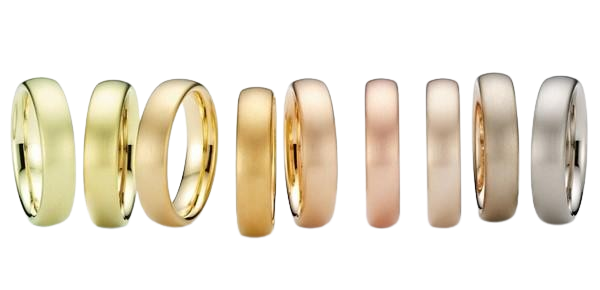What are the differences between yellow gold, white gold, rose gold and white gold?
In the collective unconscious, gold is yellow, isn't it?
And yet we find white, pink, grey and even other colors.
Do you know what differentiates these golds?
First of all, let's take a step back in time to understand where gold comes from.
Yes, if we want to go back to our origins, we first have to look up at the sky and go back some 3.8 billion years.
Recent studies have shown that the Earth was undoubtedly hit by an incessant shower of meteorites and comets from the various asteroid belts of our solar system, which had been somewhat disrupted by the movements of large planets such as Jupiter and Neptune.
According to researchers, this bombardment lasted at least 100 million years (although some suggest a longer period of up to 2 billion years), riddling the Earth, but also the Moon, with millions of impacts of varying magnitude.
Year after year, all this rocky debris came crashing down on our young planet, enriching it in the process with all the metal it was made of. Including gold.
And yes, gold isn't created peacefully on Earth like diamonds, for example.
No, gold requires the occurrence of an event as unique as it is grandiose: the death of a star.
Imagine a massive star, ten times, a hundred times, a thousand times more massive than our sun, reaching the end of its life.
For billions of years, it has consumed all the elements it can: hydrogen and helium at first, then heavier elements as the lighter ones fuse together.
But now it has nothing left to burn, and is becoming unstable.
Suddenly, under the enormous pressure of all these elements collapsing on its core, it explodes, just as a conventional star would, but on an incomparable, titanic scale.
It then becomes a supernova, offering a cosmic spectacle so brilliant that it can temporarily eclipse an entire galaxy.
It is here, in this cataclysmic explosion of intense energy, that the heaviest chemical elements are formed.
In particular, the virtually unalterable yellow metal that mankind has turned into not only a currency, but also one of its most precious commodities: gold.
Now you know why there are only limited reserves of gold on Earth.
Pure gold or alloy?
When mined, gold is naturally yellow in color, so we speak of pure, unalloyed gold, the famous 24-carat gold.
But as incredible as it may seem, pure gold is easily malleable, and in reality, unless it's massive, a fine piece of pure gold tends to deform.
This is why the gold sold in jewelry is generally an alloy of several metals to ensure rigidity.
Gold has a lot to offer!
As you can see, it's the different alloys used to produce different shades of gold.
In the world of jewelry, we mainly find yellow gold, rose gold, white gold and white gold.
Here's how they differ in composition:
- Yellow gold: 75% gold, 12.5% silver and 12.5% copper
- Pink gold: 75% gold, 20% copper and 5% silver
- White gold: 75% gold, approx. 15% silver and sometimes palladium
- White gold: In fact, it's generally used to refer to white gold.
Before it was regulated, nickel was used in its composition; nowadays, white gold is coated with a thin layer of rhodium.
However, as this tends to fade over time, it's important to remember to repeat the operation at a jeweller's to maintain the hue.
These alloys are therefore composed of different metals (silver, copper, etc.), the main base always being pure (yellow) gold.

There are other, less common shades that you may also come across: green, blue, black and even violet gold:
- Green gold: 75% gold and 25% silver, also known as electrum when alloyed naturally, with highlights ranging from yellow to green.
- Blue gold: 75% gold, 24.4% iron and 0.6% nickel. It is the heat treatment of the iron that gives the jewel its blue color.
- Black gold: rarely used in jewelry, it can be obtained on a white gold base or with a gold-cobalt alloy followed by a surface treatment with black rhodium.
- Violet gold: 79% gold and 21% aluminum, a fragile, brittle alloy that generally limits its use to inlays.
9, 18 or 24 carats?
Applied to precious metals, the carat corresponds to their purity index.
Pure gold is 24-carat gold, but as explained above, it is too soft to be worked in jewelry.
18-carat gold is the perfect balance between the amount of pure gold (75%) and the other metals, enabling it to be worked while retaining its rust-proof and non-allergenic qualities. Because of the high gold content, jewelry has a brighter color and lasts longer, making it ideal for everyday wear.
9-carat gold is harder than 18-carat gold, as there is less gold and therefore more poor metals. But it is also more brittle.
Containing more copper and silver, it oxidizes more easily and is less shiny.
Finally, if 9-carat gold contains half as much gold as 18k gold (37.5% instead of the minimum 75%), you'll find very few sellers who will sell it for half the price...
So, white gold, yellow gold or rose gold, it's a matter of taste...
However, it is essential to pay attention to the number of carats in your jewel.
